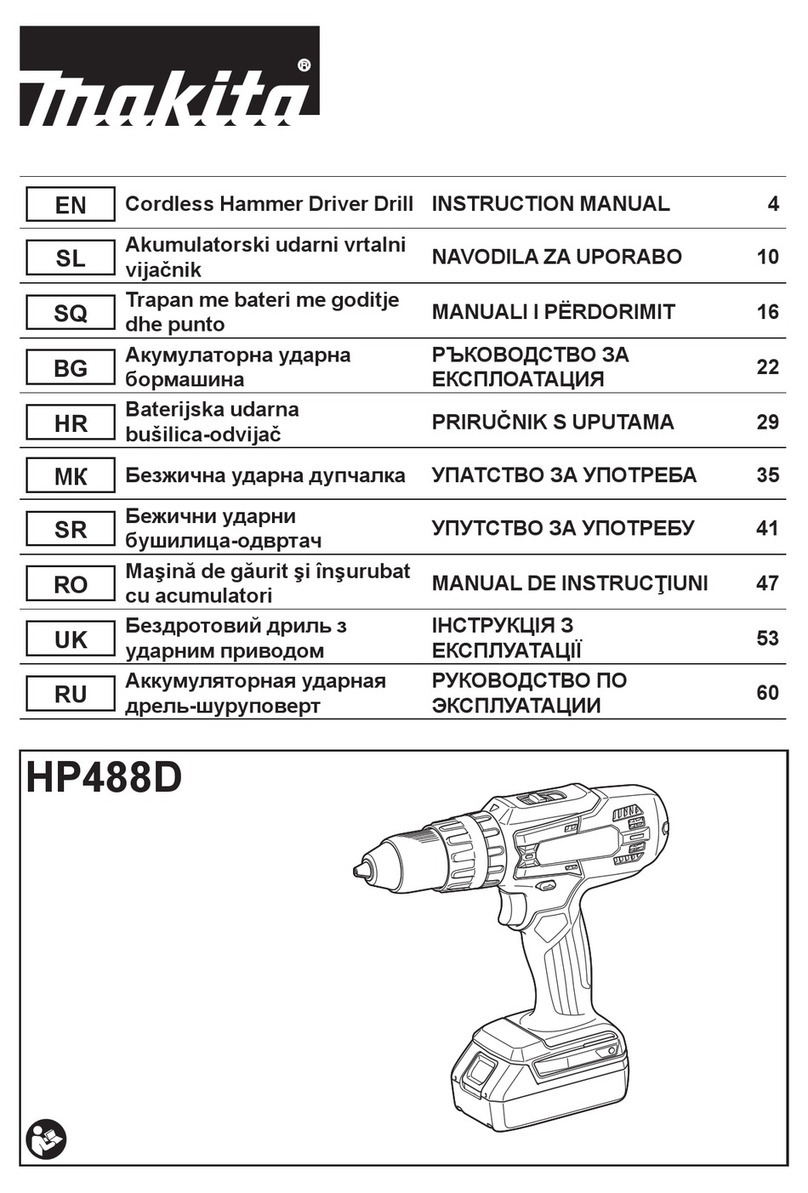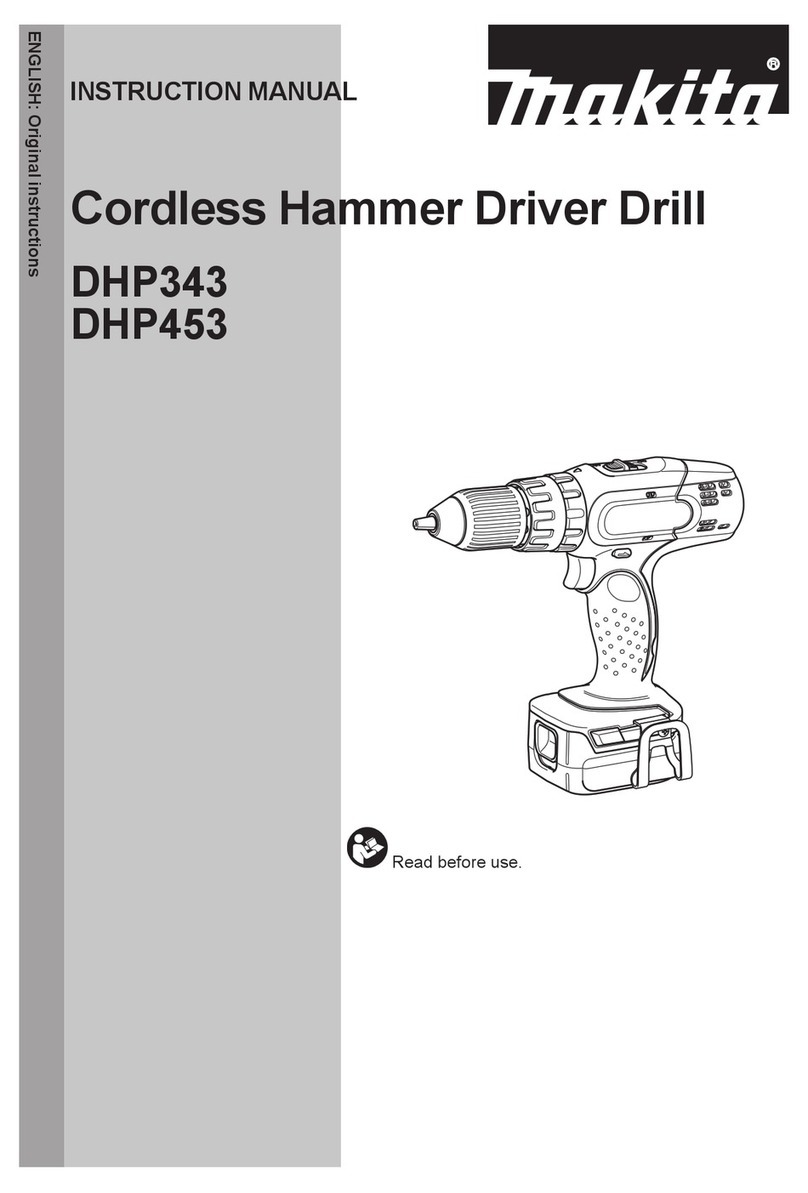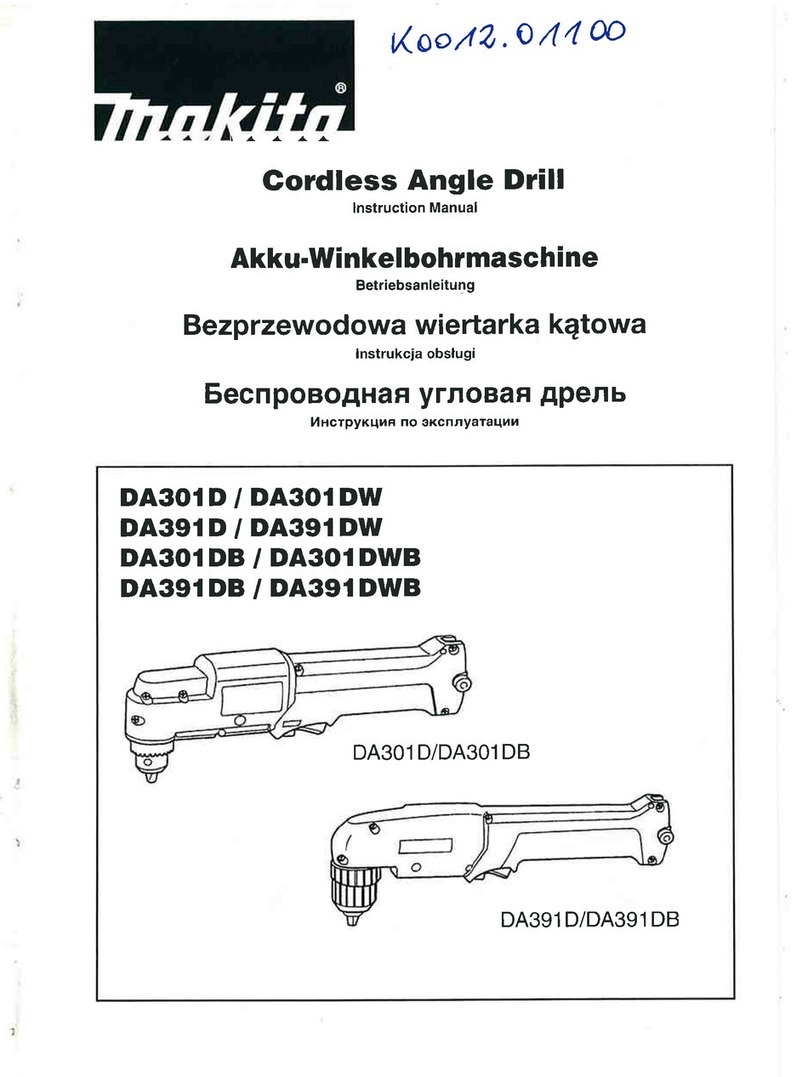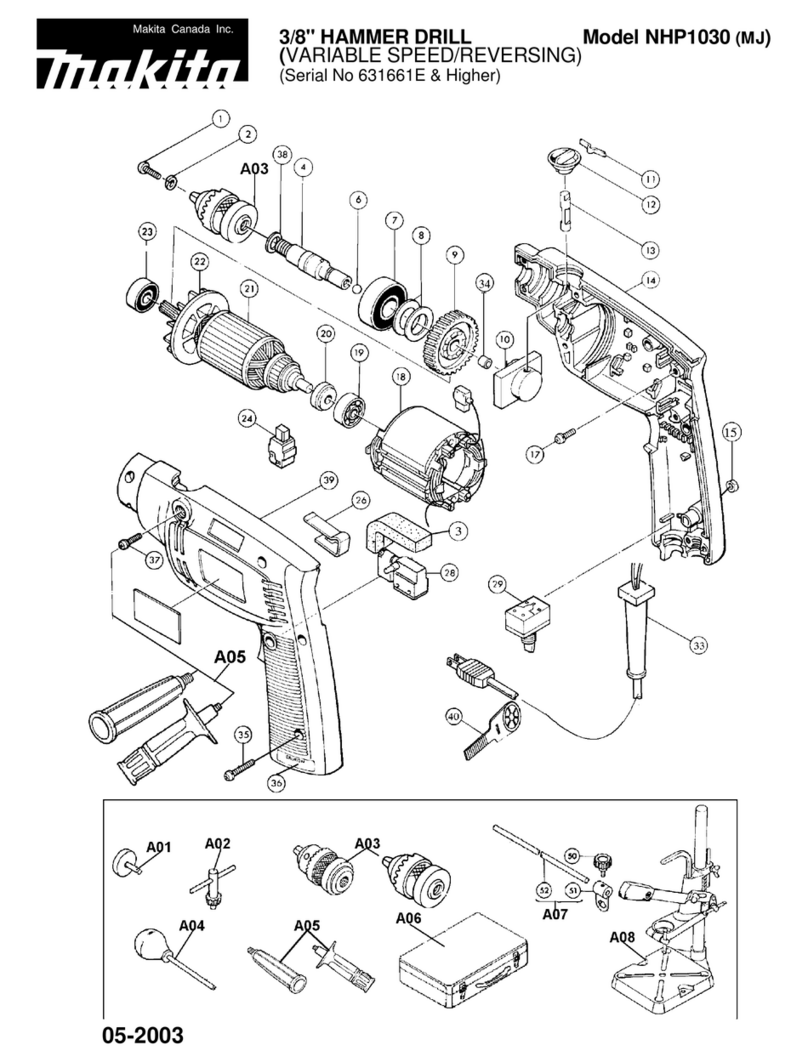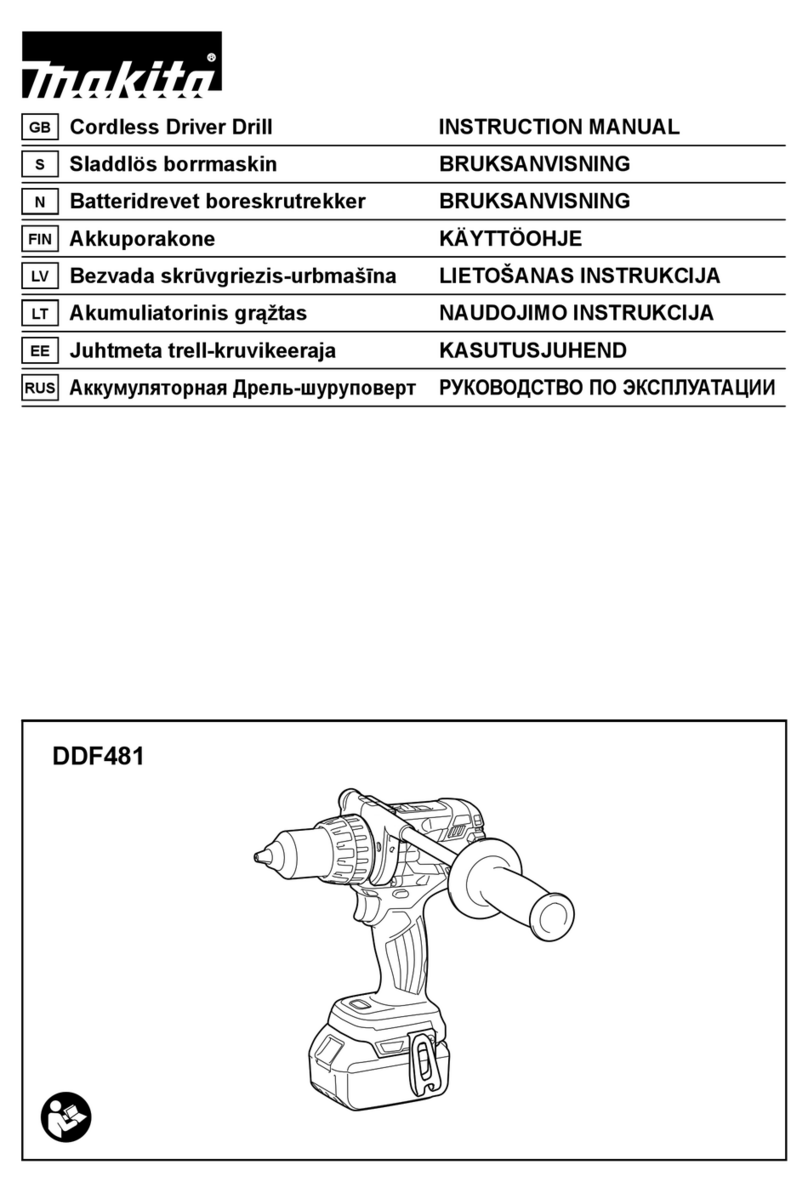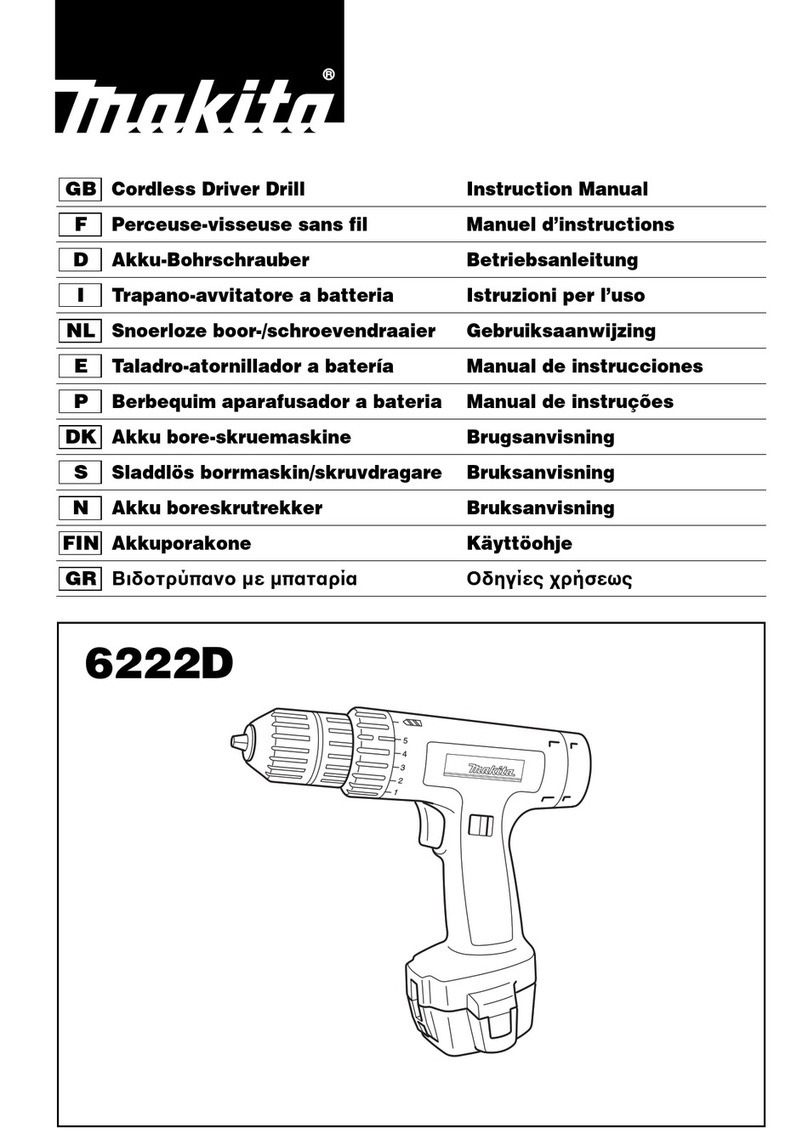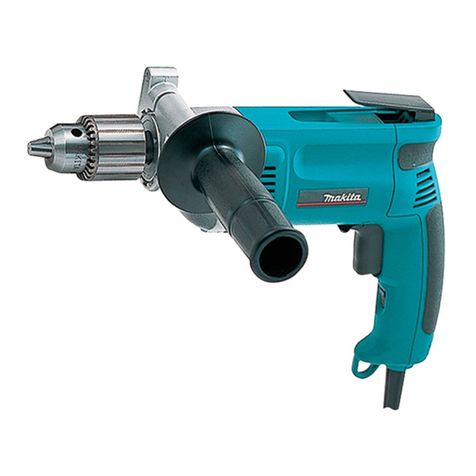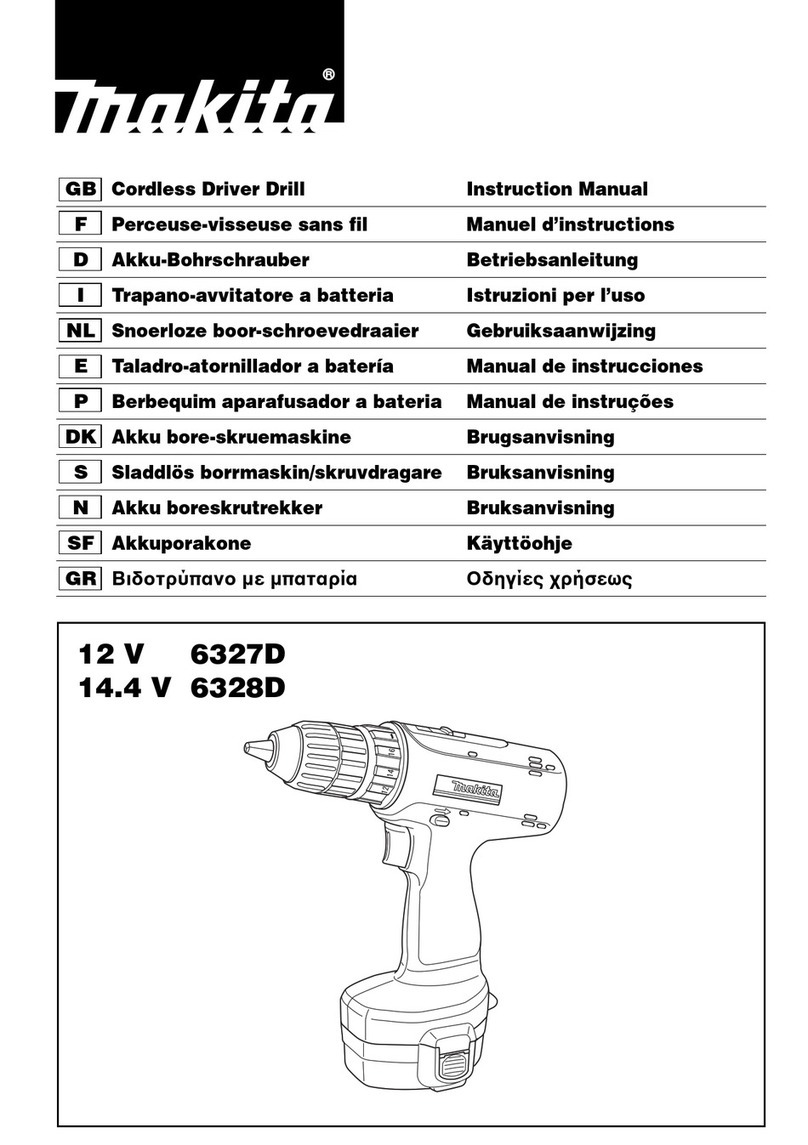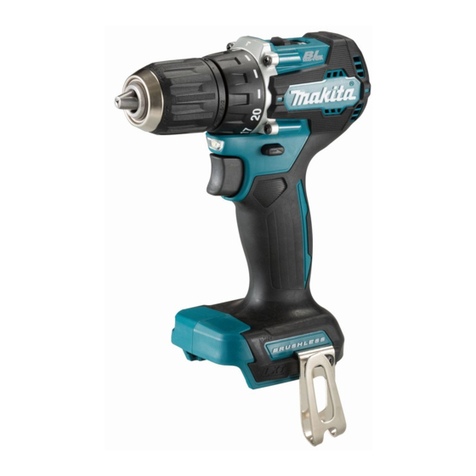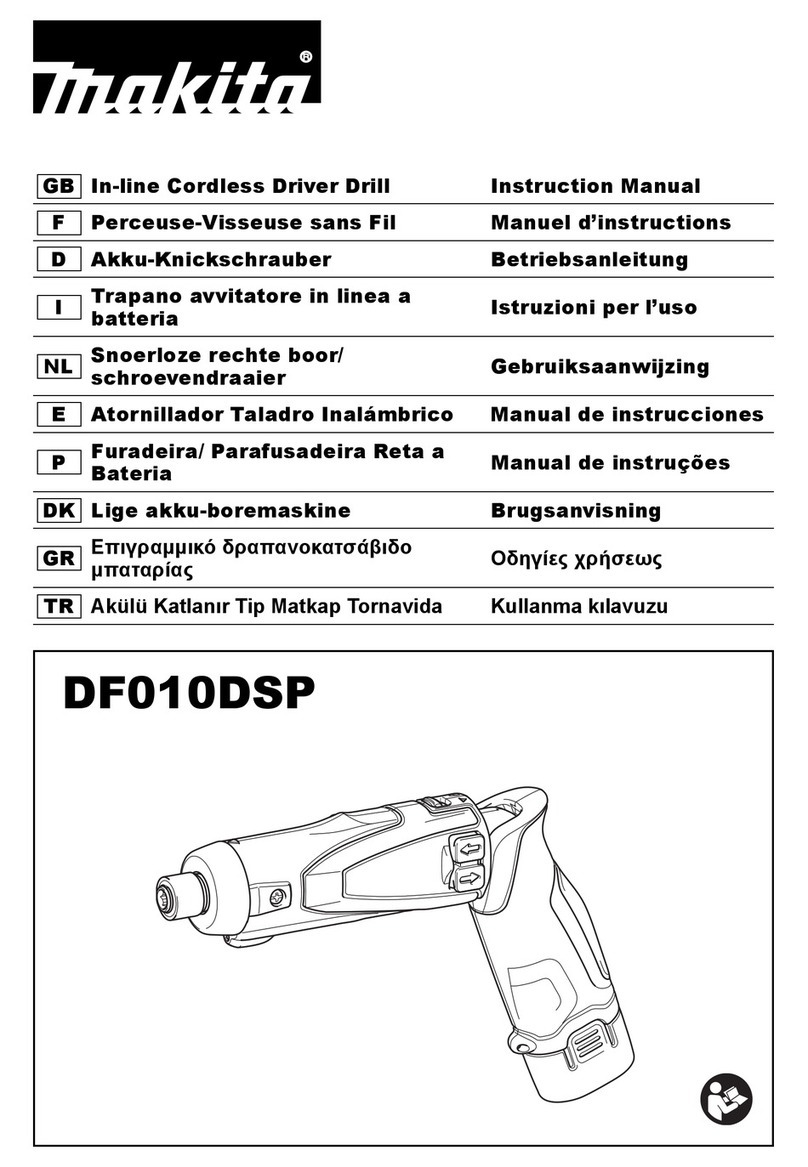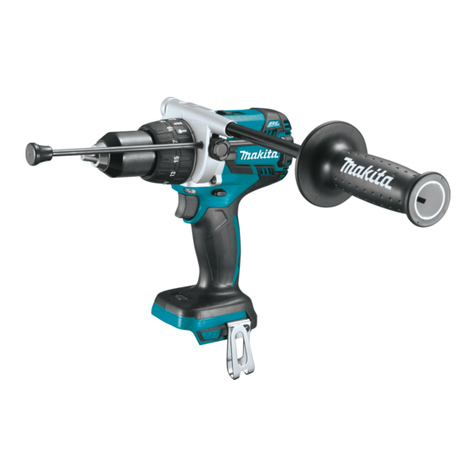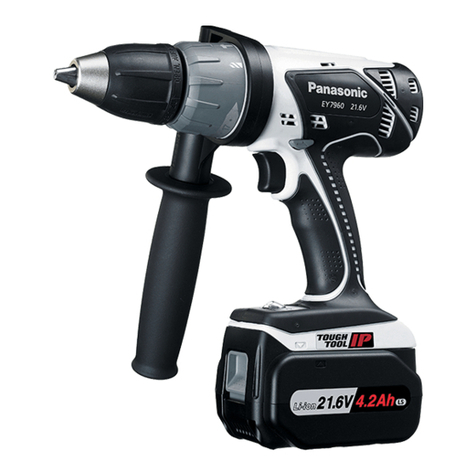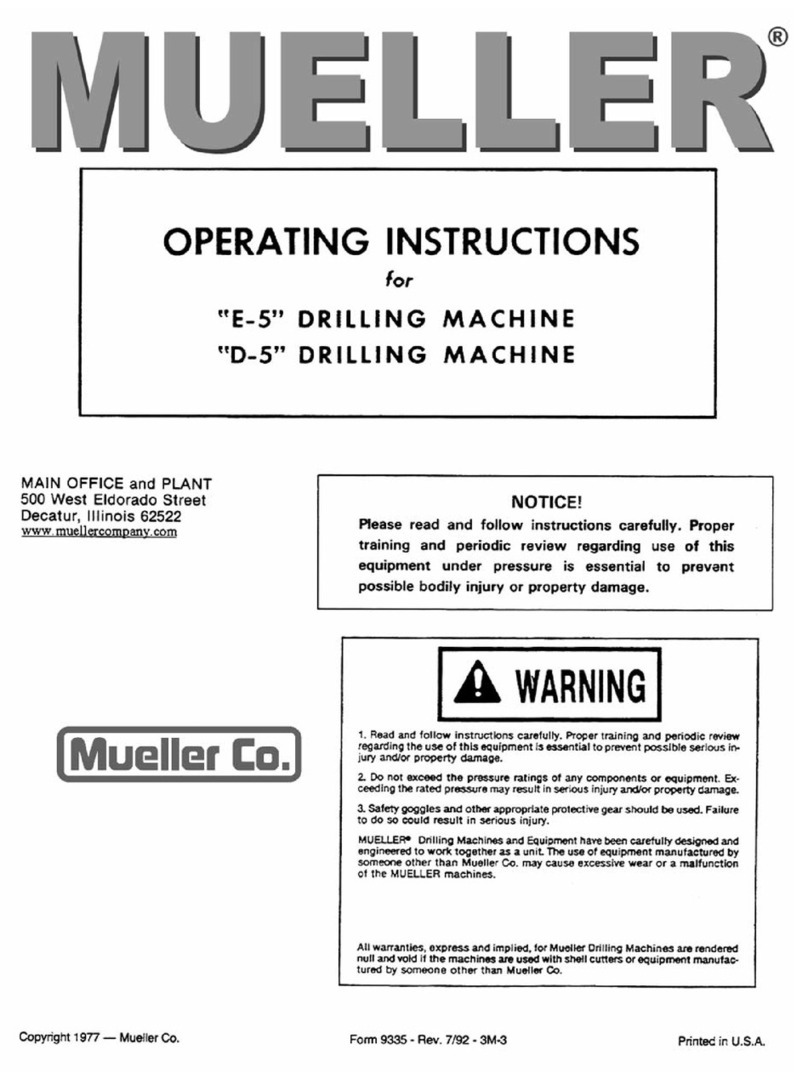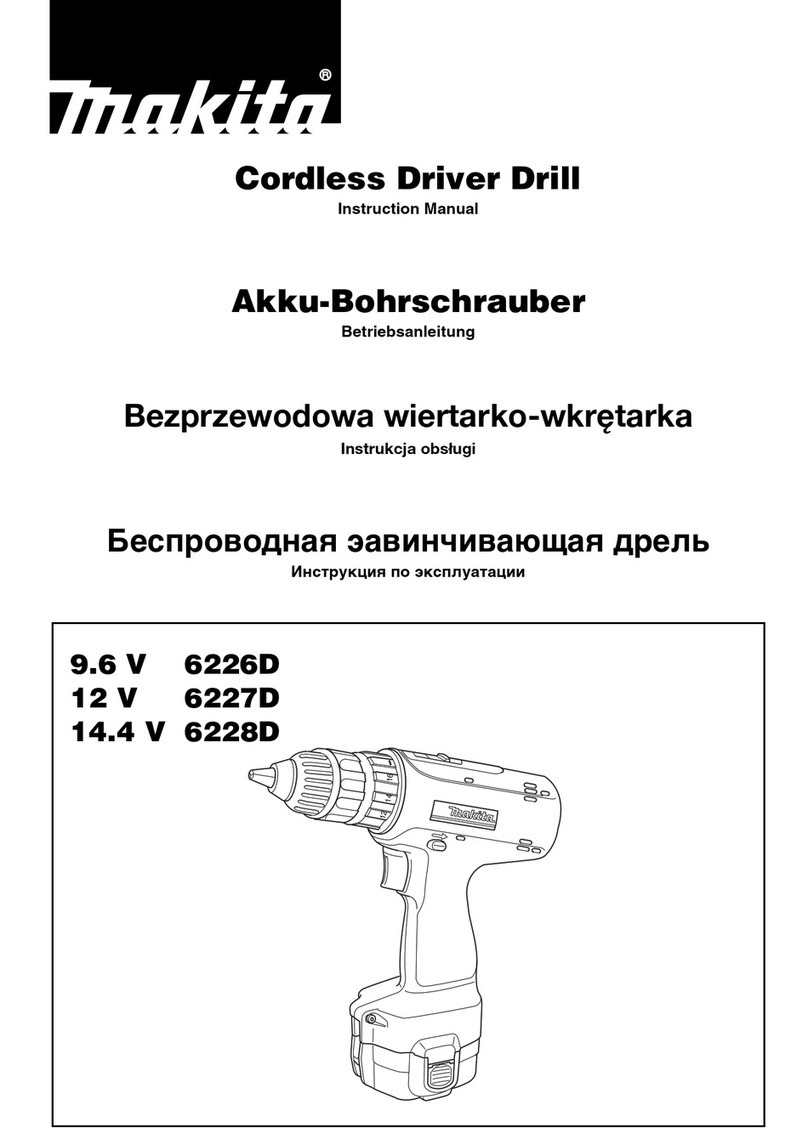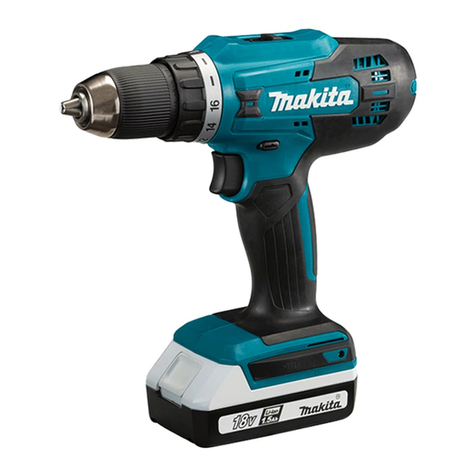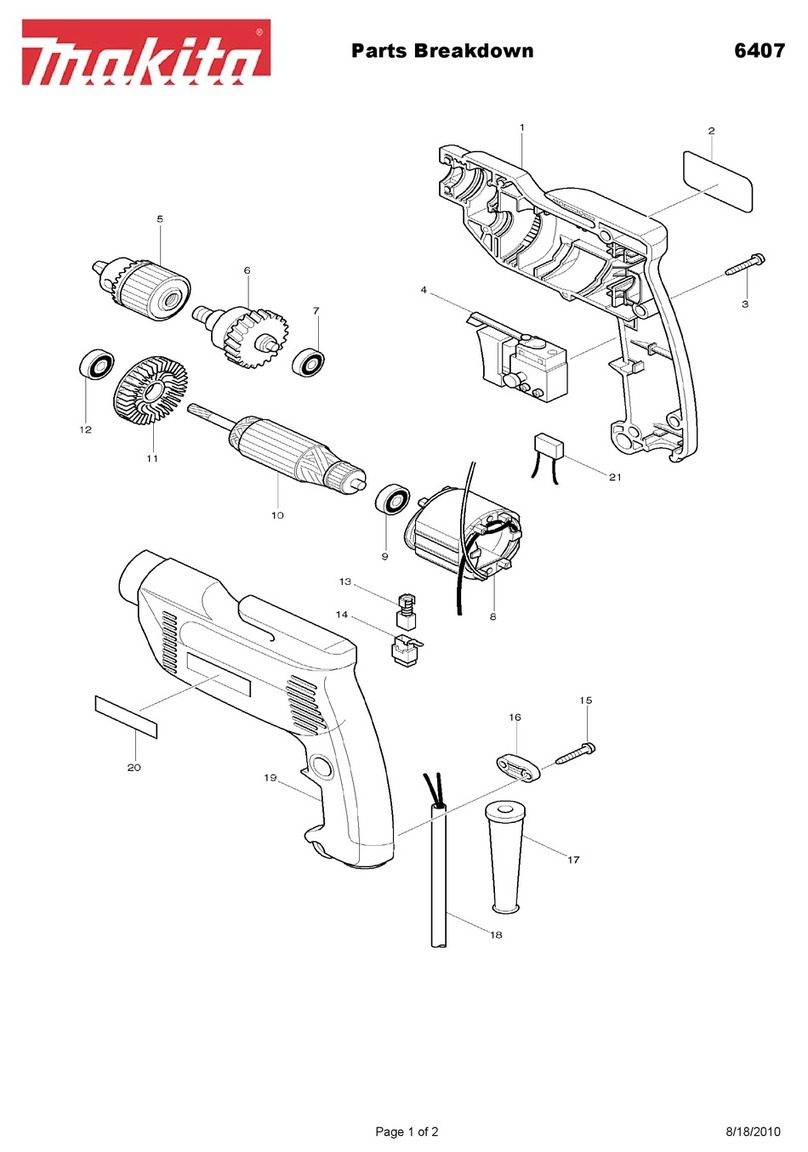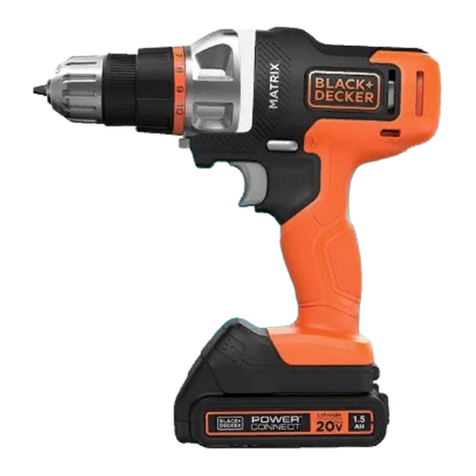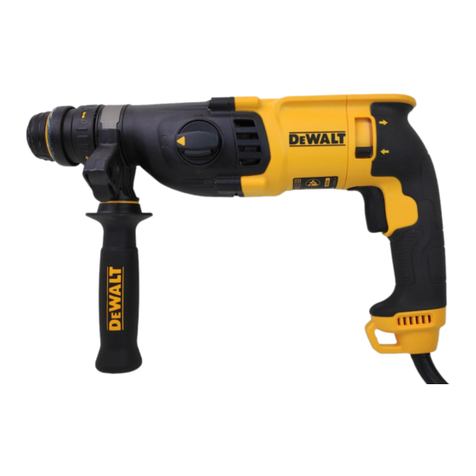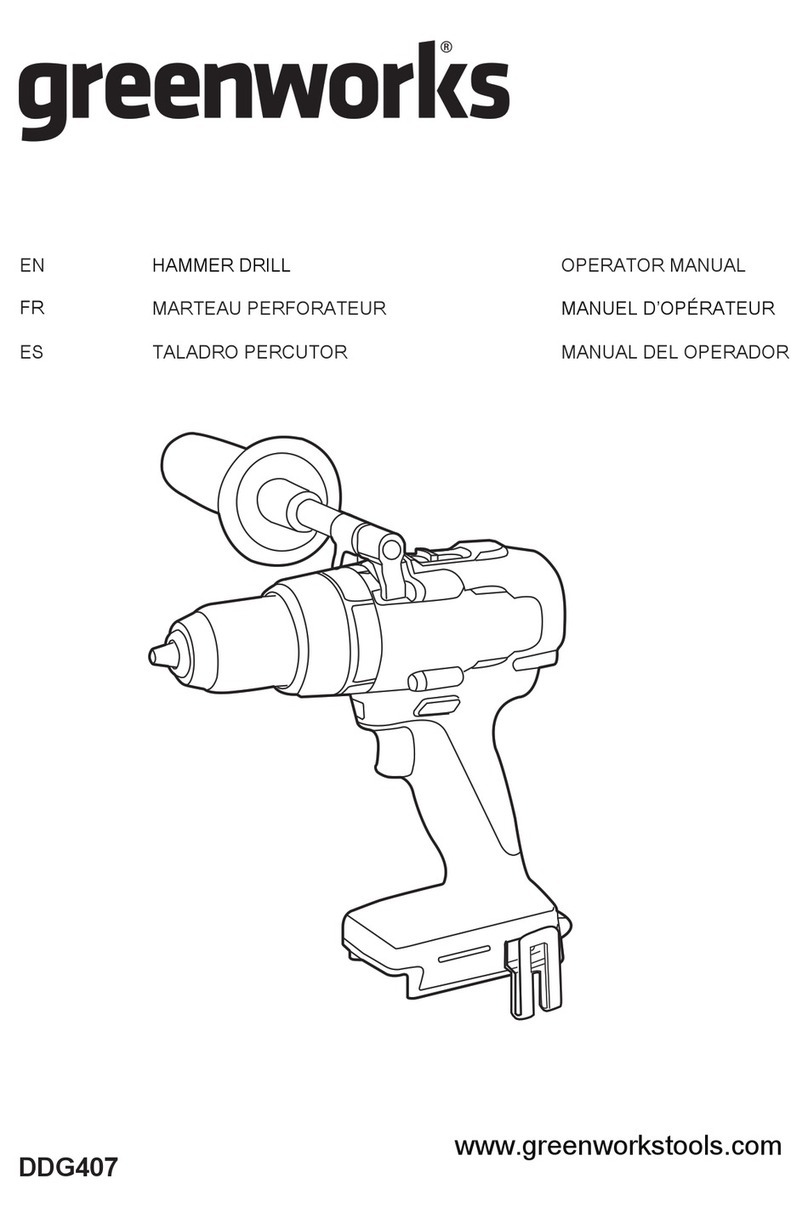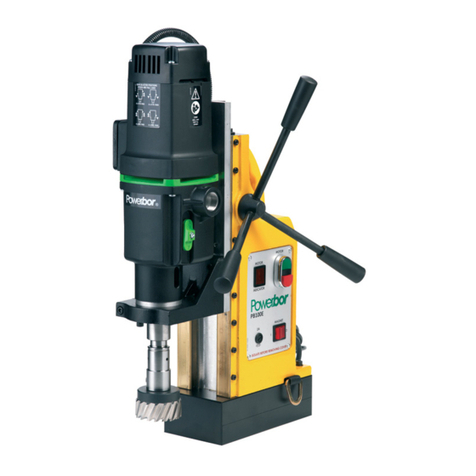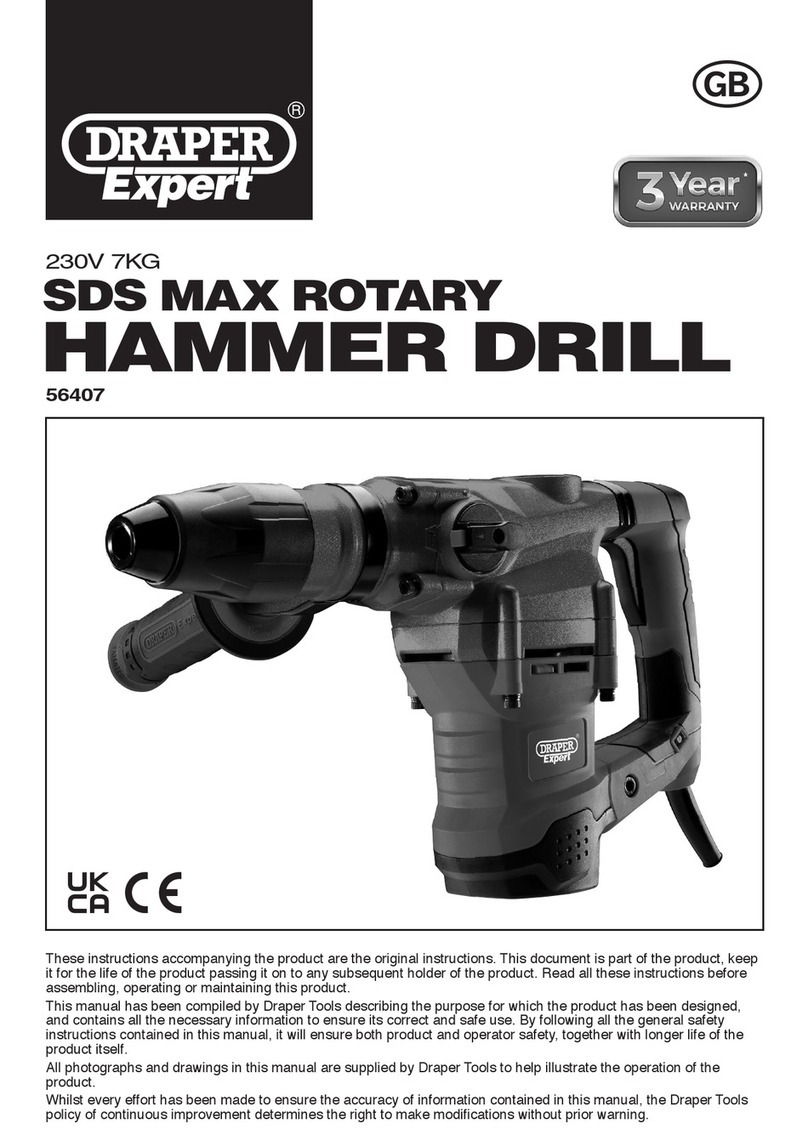
5
21. Store idle power tools out of the reach of chil-
dren and do not allow persons unfamiliar with
the power tool or these instructions to operate
the power tool. Power tools are dangerous in the
hands of untrained users.
22. Maintain power tools. Check for misalignment or
binding of moving parts, breakage of parts and
any other condition that may affect the power
tool’s operation. If damaged, have the power tool
repaired before use. Many accidents are caused by
poorly maintained power tools.
23. Keep cutting tools sharp and clean. Properly
maintained cutting tools with sharp cutting edges
are less likely to bind and are easier to control.
24. Use the power tool, accessories and tool bits
etc. in accordance with these instructions, tak-
ing into account the working conditions and the
work to be performed. Use of the power tool for
operations different from those intended could result
in a hazardous situation.
Service
25. Have your power tool serviced by a qualified
repair person using only identical replacement
parts. This will ensure that the safety of the power
tool is maintained.
26. Follow instruction for lubricating and changing
accessories.
27. Keep handles dry, clean and free from oil and
grease.
GEB003-5
HAMMER DRILL SAFETY WARNINGS
1. Wear ear protectors when impact drilling. Expo-
sure to noise can cause hearing loss.
2. Use auxiliary handle(s), if supplied with the tool.
Loss of control can cause personal injury.
3. Hold power tool by insulated gripping surfaces,
when performing an operation where the cutting
accessory may contact hidden wiring or its own
cord. Cutting accessory contacting a “live” wire may
make exposed metal parts of the power tool “live”
and could give the operator an electric shock.
4. Always be sure you have a firm footing.
Be sure no one is below when using the tool in
high locations.
5. Hold the tool firmly with both hands.
6. Keep hands away from rotating parts.
7. Do not leave the tool running. Operate the tool
only when hand-held.
8. Do not touch the bit or the workpiece immedi-
ately after operation; they may be extremely hot
and could burn your skin.
9. Some material contains chemicals which may be
toxic. Take caution to prevent dust inhalation
and skin contact. Follow material supplier safety
data.
SAVE THESE INSTRUCTIONS.
WARNING:
DO NOT let comfort or familiarity with product
(gained from repeated use) replace strict adherence
to safety rules for the subject product. MISUSE or
failure to follow the safety rules stated in this instruc-
tion manual may cause serious personal injury.
OPERATING INSTRUCTIONS
Selecting action mode
Rotation with hammering (Fig. 1)
For drilling in concrete, granite, tile, etc., turn the change
ring in the direction of Wmarking. Be sure to use a
concrete and masonry drilling bit.
Rotating only (Fig. 2)
For drilling in wood, metal or plastic materials, turn the
change ring in the direction of Vmarking. Use a
conventional bit for drilling in wood or metal.
Installing or removing drill bit (Fig. 3)
Important:
Always be sure that the tool is switched off and
unplugged before installing or removing the bit.
To install the bit, place it in the chuck as far as it will go.
Tighten the chuck by hand. Place the chuck key in each
of the three holes and tighten clockwise. Be sure to
tighten all three chuck holes evenly.
To remove the bit, turn the chuck key counterclockwise in
just one hole, then loosen the chuck by hand. After using
the chuck key, be sure to return it to the original position.
Adjusting depth of drilling (Fig. 4)
Loosen the wing bolt and adjust the depth gauge to the
desired depth. After adjusting, tighten the wing bolt.
Side grip (auxiliary handle) (Fig. 5)
The side grip swings around to either side, allowing easy
handling of the tool in any position. Loosen the wing nut,
swing the side grip to the desired position and then
tighten the wing nut.
Speed change (Fig. 6)
To change the tool speed, press the change lever and
slide it to the “L” position for low speed or the “H” position
for high speed. If the change lever does not slide easily,
turn the chuck slightly in either direction while sliding the
change lever.
Switch action (Fig. 7)
For HP2020
To start the tool, simply pull the trigger. Release the trig-
ger to stop. For continuous operation, pull the trigger and
then push in the lock button. To stop the tool from the
locked position, pull the trigger fully, then release it.
Switch action (Fig. 8)
For HP2000
To start the tool, simply pull the trigger. Tool speed is
increased by increasing pressure on the trigger. Release
the trigger to stop. For continuous operation, pull the trig-
ger and then push in the lock button. To stop the tool from
the locked position, pull the trigger fully, then release it. A
speed control screw is provided so that maximum tool
speed can be limited (variable). Turn the speed control
screw clockwise for higher speed, and counterclockwise
for lower speed.
CAUTION:
• Before plugging in the tool, always check to see that
the switch trigger actuates properly and returns to the
“OFF” position when released.


